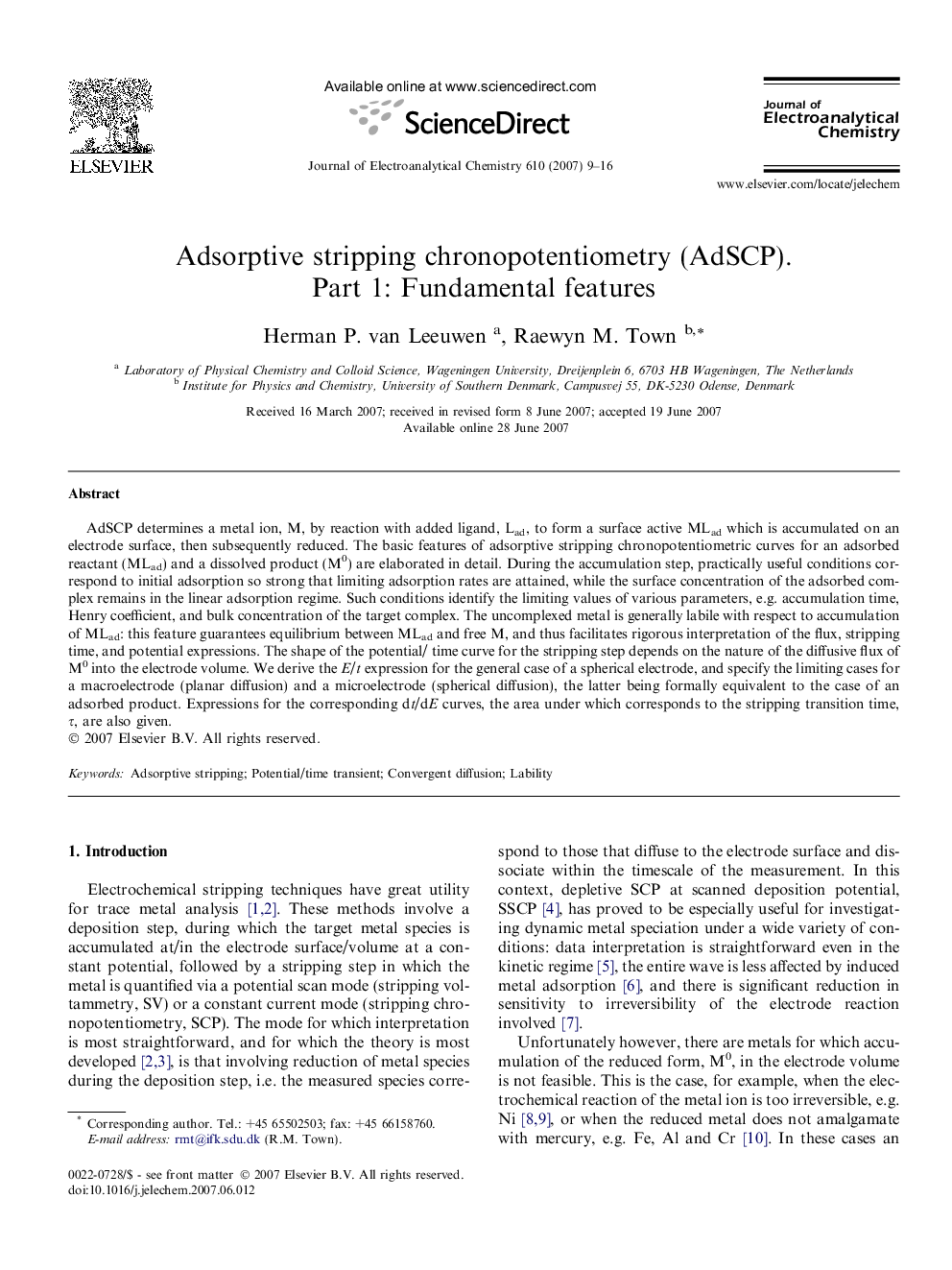| کد مقاله | کد نشریه | سال انتشار | مقاله انگلیسی | نسخه تمام متن |
|---|---|---|---|---|
| 220781 | 463352 | 2007 | 8 صفحه PDF | دانلود رایگان |

AdSCP determines a metal ion, M, by reaction with added ligand, Lad, to form a surface active MLad which is accumulated on an electrode surface, then subsequently reduced. The basic features of adsorptive stripping chronopotentiometric curves for an adsorbed reactant (MLad) and a dissolved product (M0) are elaborated in detail. During the accumulation step, practically useful conditions correspond to initial adsorption so strong that limiting adsorption rates are attained, while the surface concentration of the adsorbed complex remains in the linear adsorption regime. Such conditions identify the limiting values of various parameters, e.g. accumulation time, Henry coefficient, and bulk concentration of the target complex. The uncomplexed metal is generally labile with respect to accumulation of MLad: this feature guarantees equilibrium between MLad and free M, and thus facilitates rigorous interpretation of the flux, stripping time, and potential expressions. The shape of the potential/ time curve for the stripping step depends on the nature of the diffusive flux of M0 into the electrode volume. We derive the E/t expression for the general case of a spherical electrode, and specify the limiting cases for a macroelectrode (planar diffusion) and a microelectrode (spherical diffusion), the latter being formally equivalent to the case of an adsorbed product. Expressions for the corresponding dt/dE curves, the area under which corresponds to the stripping transition time, τ, are also given.
Journal: Journal of Electroanalytical Chemistry - Volume 610, Issue 1, 15 November 2007, Pages 9–16